From the ![]() Sweets Issue
Sweets Issue
Italian pastry culture is a serious business. And a global one at that, with bakeries shelling out cannoli and gelati to their local populations all over the world. The desserts and treats that come from the peninsula are, in some cases, as ubiquitous and pervasive as its world famous pasta. And much of #thatpastrylife can be attributed in large part to one small region of Italy: Sicily.
The islanders take their sweets very seriously and have done so for centuries, and Sicily’s natural bounty is a massive part of the economic, social and historic fabric of life. The raw materials are pristine, and appreciated for inherent and illustrative flavors.
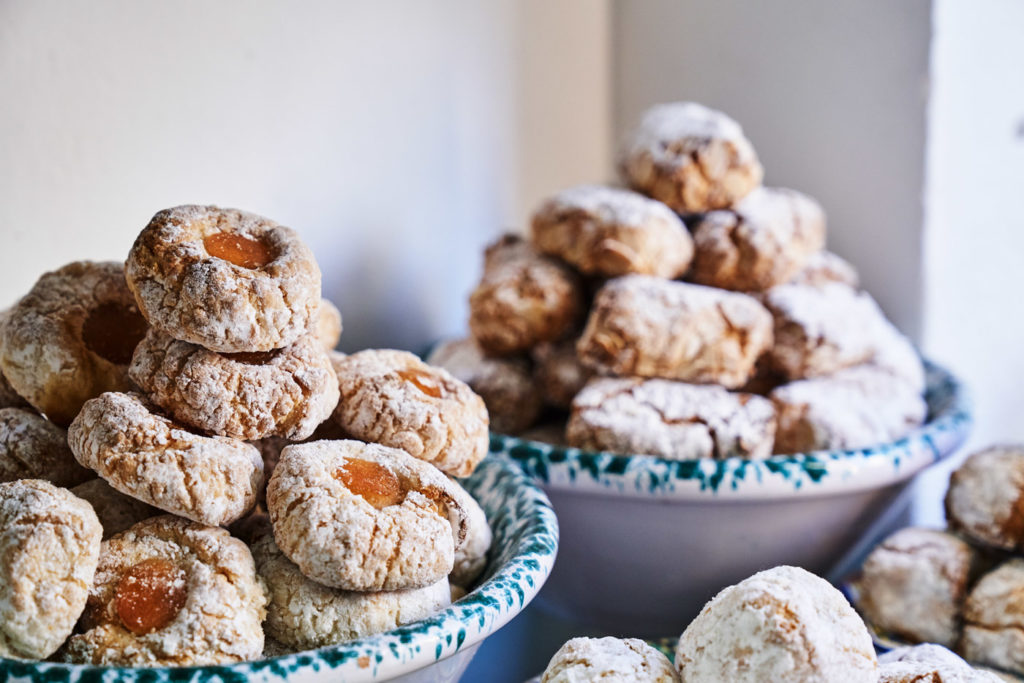
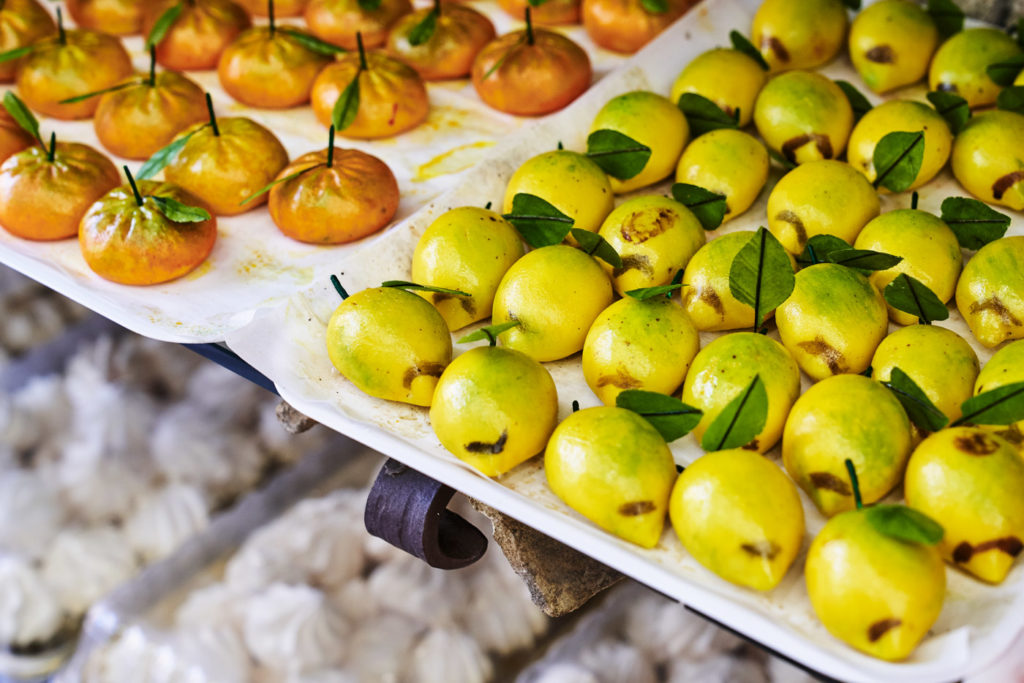
To get a better understanding of how that appreciation of simple ingredients evolved into a tradition of sweet-tooth satisfying favorites known the world over, we sat down with Corrado Assenza, chef and owner of Caffé Sicilia in the Baroque town of Noto.
Assenza could be referred to as capocuoco famoso these days, after a compelling turn as the feature of a Chef’s Table episode in season five. But he refuses to accept that kind of title. “Chef is a bad word,” he tells me. And sitting at one of the small, round tables in his tiny café wearing a polo shirt and blue jeans, he certainly looks nothing like the archetypical chef in whites, barking orders at cooks and staff. Assenza by contrast is exceedingly affable. He could be my uncle, rather than one of the world’s most celebrated modern culinary minds.
But as influential as he is to the contemporary scene, what Assenza is doing every day isn’t necessarily new—not to the global pastry industry, not to the island of Sicily, and not to Assezna himself, who began working in his family’s business as a child. He tells me the café has been in this location for 126 years, now in its fourth generation of ownership with him.

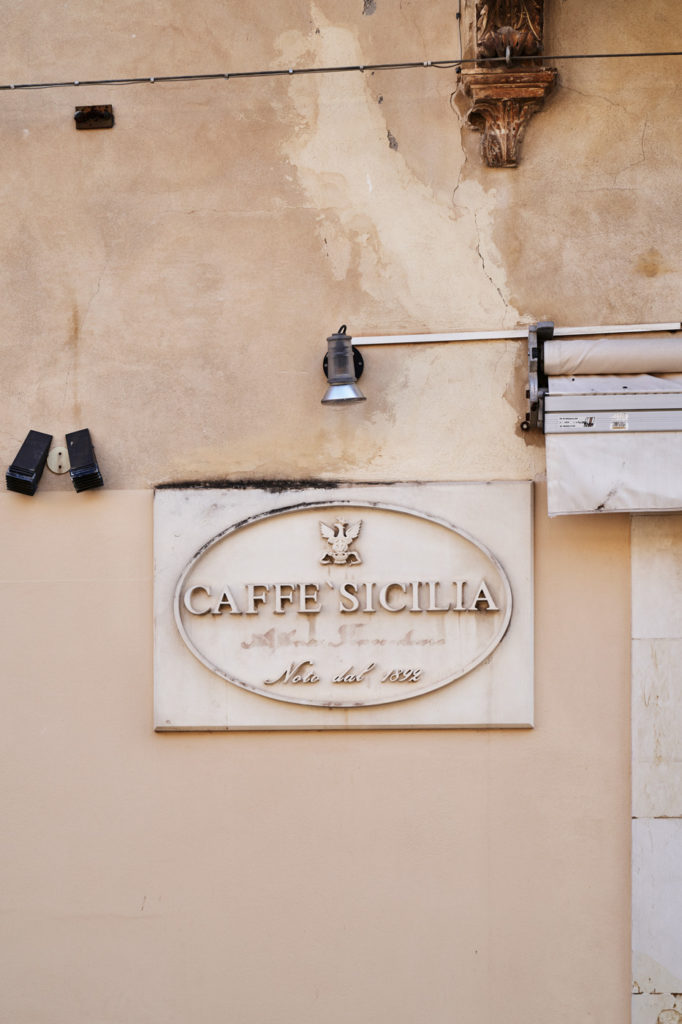
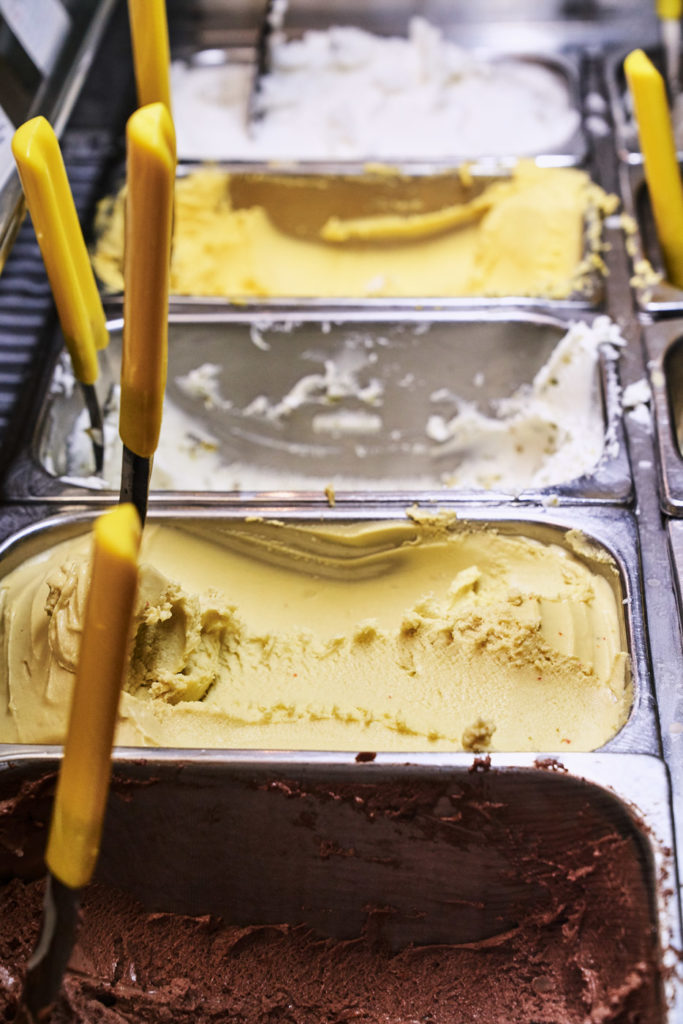

Those who have the opportunity to visit are treated to an eye-popping array of pastries and gelati from the cases that flank the narrow front room. Minty green cassata and cannoli, cookies studded with Bronte pistachios and almond biscotti. Tarts, cakes and even honeys packaged especially for Assenza’s operation are for sale, to take with you if necessary on the occasion that you can’t find a table. It’s hard to imagine where all these gastronomic globetrotters fit when they come to visit. Many of the sweets are familiar at first sight, but tasting these pastries is something else entirely. The flavors are intense, but the sweetness is subtle. Cannoli filling is delicate and marshmallow-airy, while a sturdy morning cake made with oats would make a satisfying breakfast—but one that would probably confound a hyper-sugared American palate.
Of all the acclaimed items for which one visits Assenza though, easily one of the café’s shining stars is the one most closely tied to true Sicilian culture: granita. It’s a simple dessert made of sugar, water and flavoring, and shares a DNA with the Italian ices that are more common stateside. This stuff, however, is much softer and loose, meant to be served in a bowl or spooned in between a split open, freshly baked brioche bun. Eating granita is a morning ritual for residents of the island served with their breakfast cup of caffé—in some cases, the espresso granita is so potent, it supplants the need for the cup altogether.
Assenza is a consummate educator as well as a cook. He explains the history of granita: “It arrived in the past from the East.” He tells us of evidence that frozen water was served by Arab and Turkish populations during lavish parties for royalty in Istanbul, Constantinople. There, he tells us, flowers and vegetables were often incorporated into the recipes. Eventually, the practice made its way to Sicily’s shores—likely after the ninth century’s Arab conquest of the area—and snow from Etna’s peak was sourced as an ingredient for the frozen dessert. “The Persians added just a touch of sugar and honey, and that was granita,” Assenza says. “After that, it was refined from the elegant culture of Sicilian pastries.”
Today, granita is perhaps one of the island’s most prized traditions, and one of Assenza’s greatest calling cards globally. People travel from all over to get their granita fix from Caffé Sicilia, where Assenza’s flavors cover the classic canon of almond, coffee, pistachio and the others travelers and locals have come to expect. We taste a strawberry-tomato option, as well as a tangerine, each of which practically reach up like a cartoon hand and yank you into a world where you’re sitting on a farm somewhere beneath the southern Italian sun. Sugar doesn’t interfere with the flavor so much as it acts as a smelling salt, snapping it awake to its most alert—its moment of peak potential.
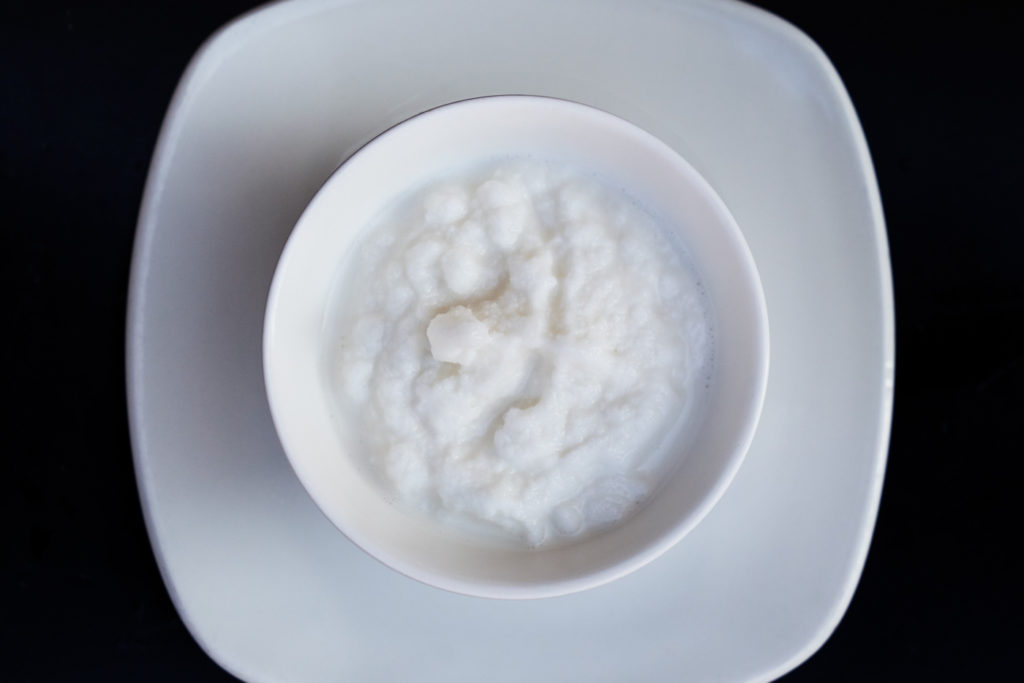
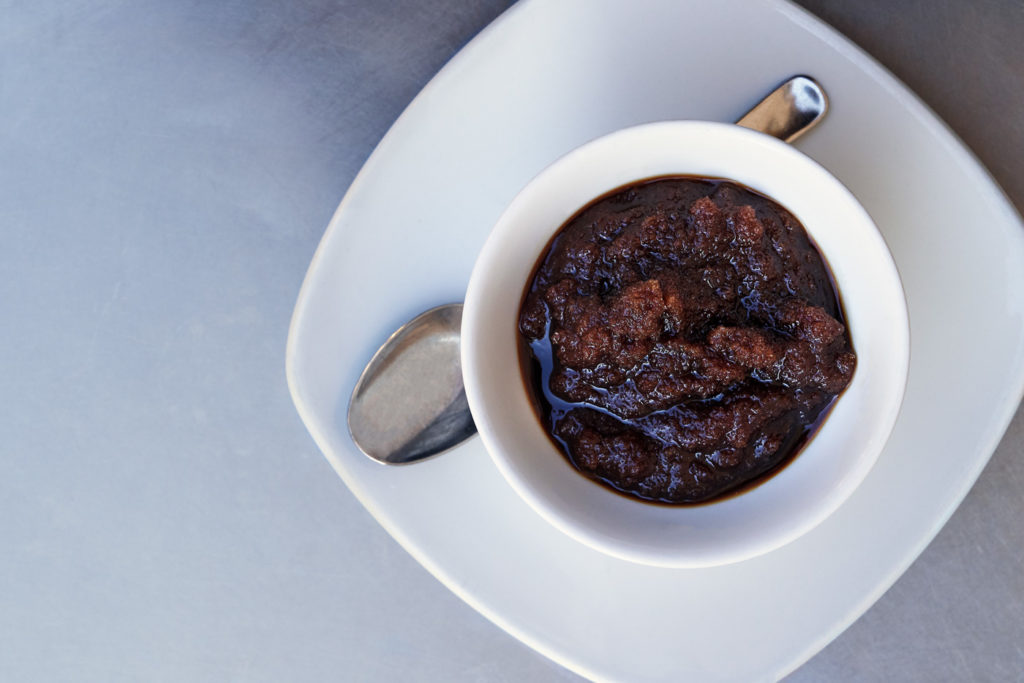
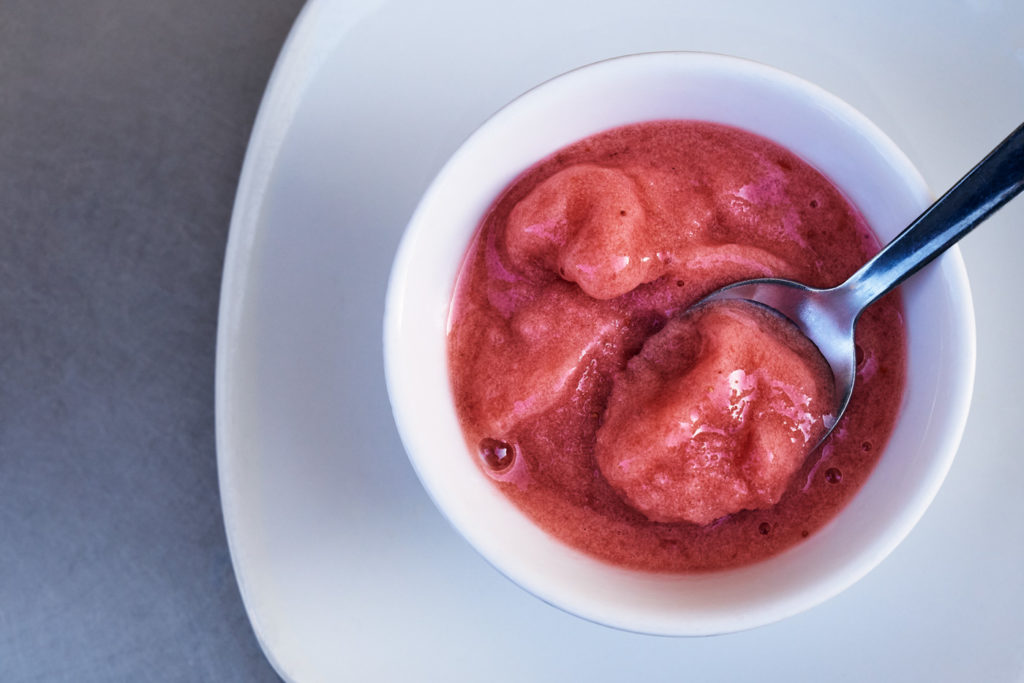

As we sample our way through a flight of these frozen treats, Assenza explains the importance of food culture in Italy, and how certain ingredients can signify to a diner where a dish was born. “The northern side of Italy—Emilia Romagna, the plains, Tuscany—were deeply influenced by French culture and food,” he says. The Mediterranean areas, including Campagna, Puglia, Calabria, Sicilia and Sardinia were more influenced by the east and south.
Assenza describes the use of butter in the north versus extra virgin olive oil in the south. Sugar in the north and honey in the south. A richer use of dairy in the north, with butter, milk and cream prevalent, while in the southern areas like Sicily, preparations are “more light and fresh,” hence the popularity of granita—sensible, given the intense heat of the summers here. He muses that they are, “Two completely different ways to approach the food.”
Sicilians, he says, abstain from heavy sugar use in their pastries, paying homage to the inspiration of each flavor. “Something sweet [comes] not from sugar, but from [the] ingredients, because each ingredient has salt and sugar inside the body. If you use natural sugar in the body of the ingredient—vegetables, meat, fish, cheese, all kinds of fruit—you can have a menu from the starter to dessert using the natural sweet and savory [of each ingredient].” For those who still can’t be sold on the granita over good ol’ ice cream, Caffé Sicilia’s ricotta gelato is a prime example of this. The natural, lactic sweetness of the cheese shines, allowing the mildly funky flavor to linger, unobstructed by unnecessary added sugar.
In this way, what Assenza and other pastry makers on the island do is more about shepherding the work of others from the farms and fields to the pewter cup or pastry case. “I like to make food with the roots deeply in Sicily,” he says, noting it is his philosophy he considers a dish a success when it presents “not our work, but the ingredients” on the palate.
“We need to be transparent and put you in front of the real ingredients,” he says. Those ingredients drive the dish, not the other way around. And in the kitchen, he believes the farmer should drive what the chef produces, as opposed to the reverse, lamenting that “the only person in the food chain that is the face in the eyes of the consumer” is the chef. It is a critical part of his mission to champion not only ingredients, but the island’s residents. “I need all the people at my back,” he says.
At the shop level, the people who make pastry dreams come true are fitted with soda jerk paper hats and bowties. It’s a nostalgic scene, and in this sense, his café feels every inch as old as its century-plus life. But the man at its helm has decidedly progressive ideas on the future of food, evident in the way he regards one of the largest issues facing his beloved island: a rapidly shifting population, and influx of refugees. “We cannot stop the flow of young people coming from the south of the world. This is the time—no ban will be able to stop it,” he reflects on potential pain points of this situation. “It will be a dangerous struggle between the young hungry man coming in the western side, and the culture they bring to us from the south of the world.”
However, Assenza also sees the power and inevitable influence of these immigrants on culture as well as cuisine as an opportunity and inspiration: “It’s like opening the door and letting the wind inside. When the new ideas arrive, this is the time to recharge your battery,” he says, noting young cooks provide a reason for him to push his work further, both in the kitchen and out.
To that end, Assenza uses his café as a platform to educate, but he has also been teaching students in northern Italy for the last several years. His classes begin with Assenza and his students making purchases from local farmers, before returning to the kitchen to collaborate. “All my lessons start from the first day in the market to buy ingredients. I arrive with some ideas and ways to process the ingredients, but no recipes,” he says.
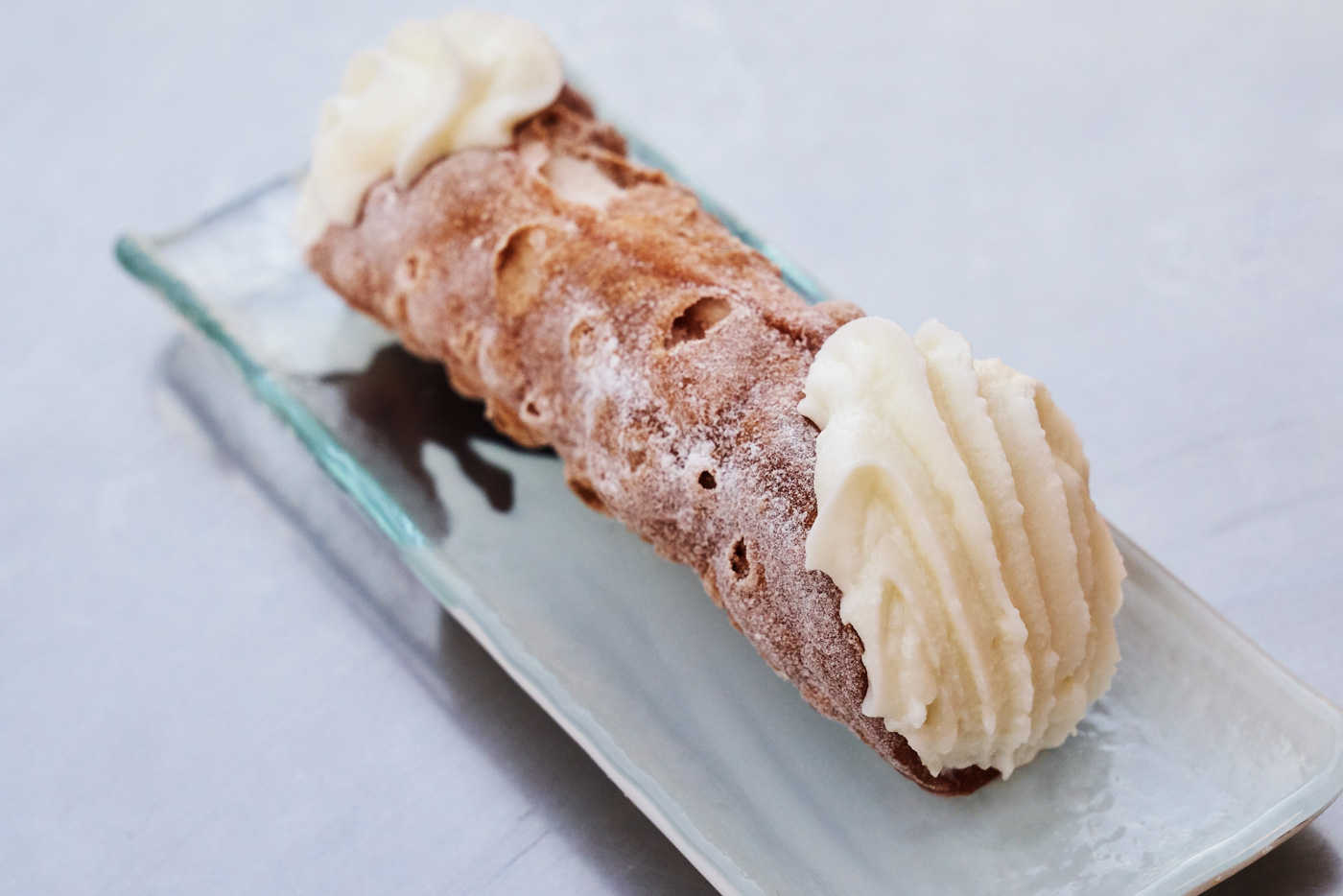
“Applying the work of twenty people—forty hands—we produce a lot of food in three days,” he continues. Assenza encourages the kind of no-boundaries curiosity for which his café has become known. Gelato is flavored with beets, green beans or spring onion, for example, which can even be transformed into a sauce for vegetable ravioli.
And whether you refer to him as a teacher—or by another word for which he has no particular love—this “chef” sees the value in his growing notoriety beyond filling seats in his café. Recently, he’s begun receiving requests to curate gastronomic tours, helping enthusiastic pastry-lovers and travelers access the landscapes and people that produce his prized ingredients, like the Noto almond which he has long championed. He lights up at the prospect of diverting that gaze to his beloved ingredients, the Sicilian land, and the many producers he counts as friends.
This is the kind of thing that keeps such a curious chef invigorated by a business that has been operating for over a century—it’s a sense of humanity, of being a part of some bigger picture. Each new dish he creates is a think piece, meant to encourage a broader conversation about Sicilian food and the collaboration of global cultures, rather than one-off attention grab for Instagram. Perhaps being a part of such a deep history creates a sense of obligation—to continue a legacy, this particular part of the story capturing the contemporary food industry during his tenure, culinary prose upon which future operators of Caffé Sicilia can reflect.
Assenza’s restless spirit is perhaps his greatest asset—it keeps his guests on their toes, and his work constantly relevant. Like the island itself, he is caught between worlds. While the region navigates murky waters of its location between the Italian peninsula and north Africa, grappling with waves of refugees, how and whether to adopt the traditions of its evolving population, Assenza doesn’t ignore the shifting interests of the global food industry. Technologies, ingredients, and kindred spirits regardless of their cultural provenance all inspire him. It’s a blending, and an emulsification—like sugar and water—of cultures and ideas and eras that keeps Assenza excited and engaged, and has captured the attention and respect of a truly international food world.
This story was made possible with the support of La Cook.





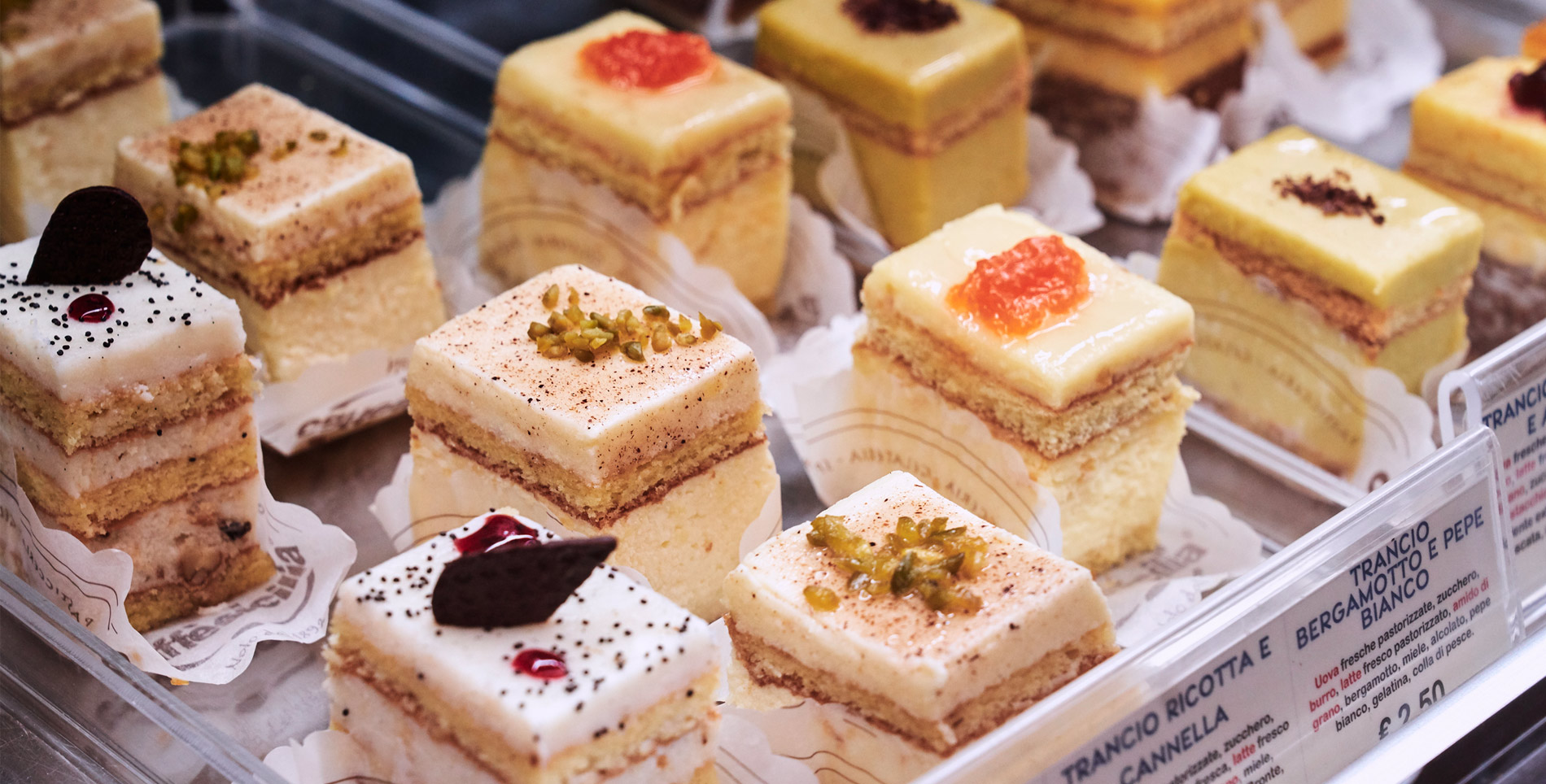

Our comments section is for members only.
Join today to gain exclusive access.